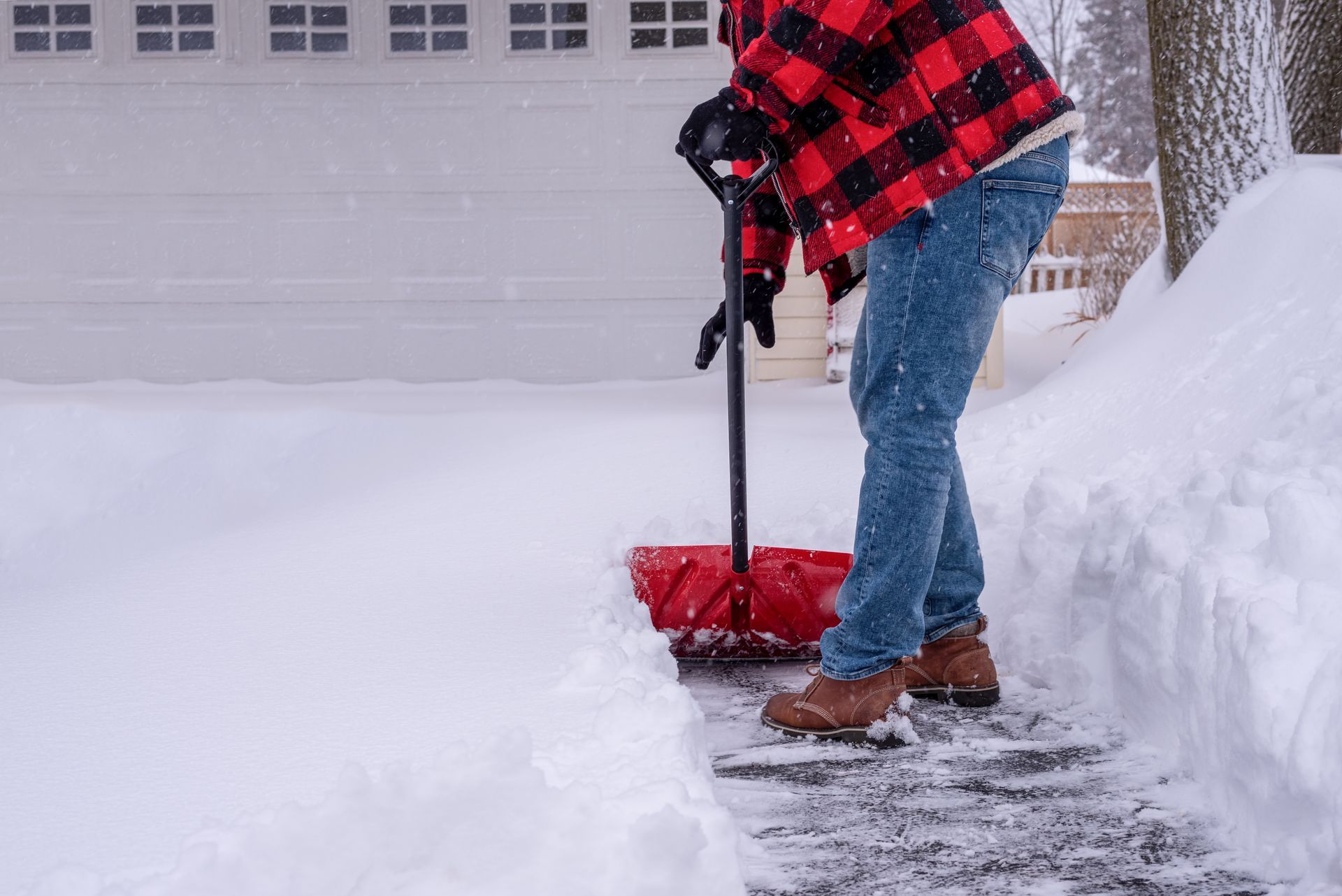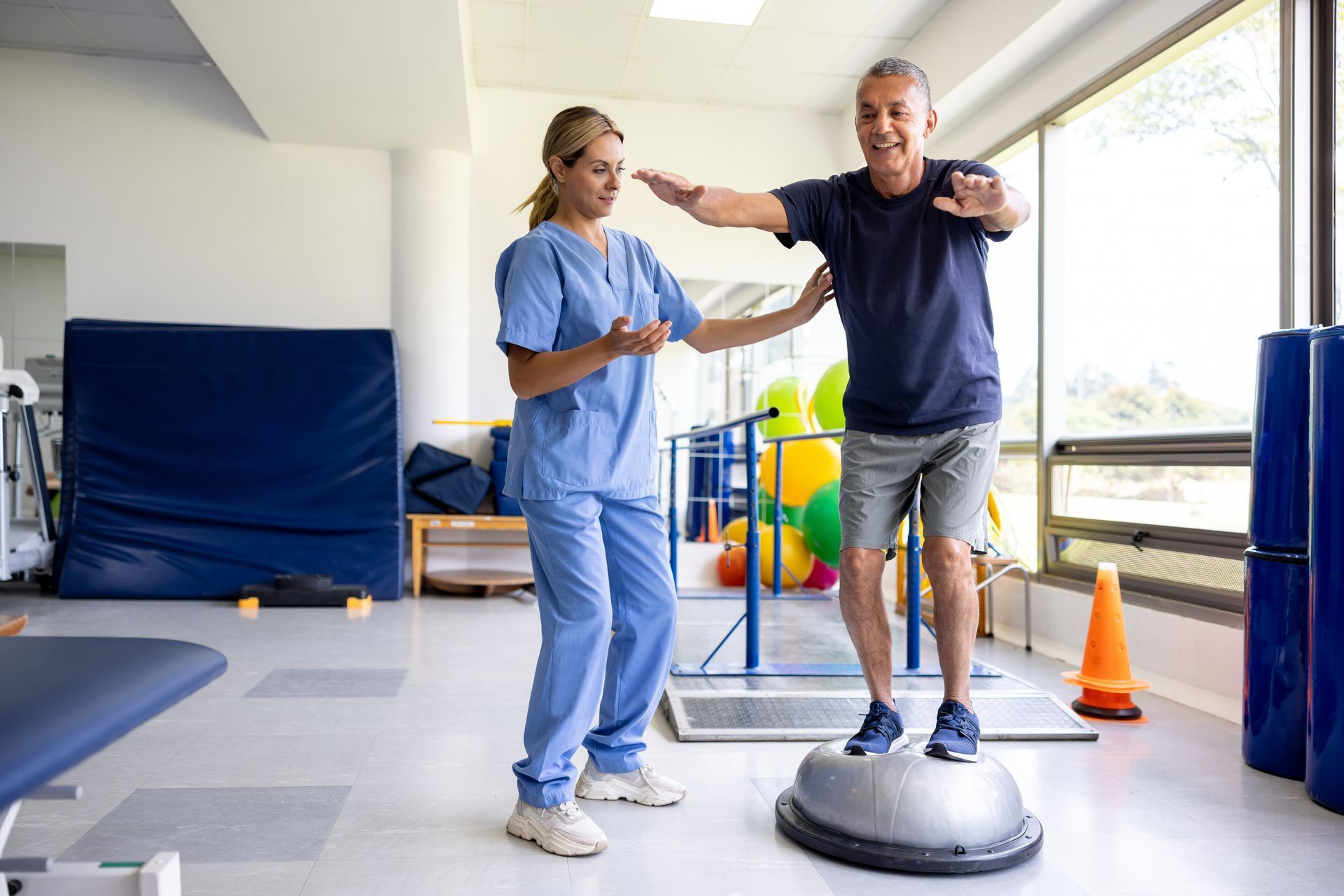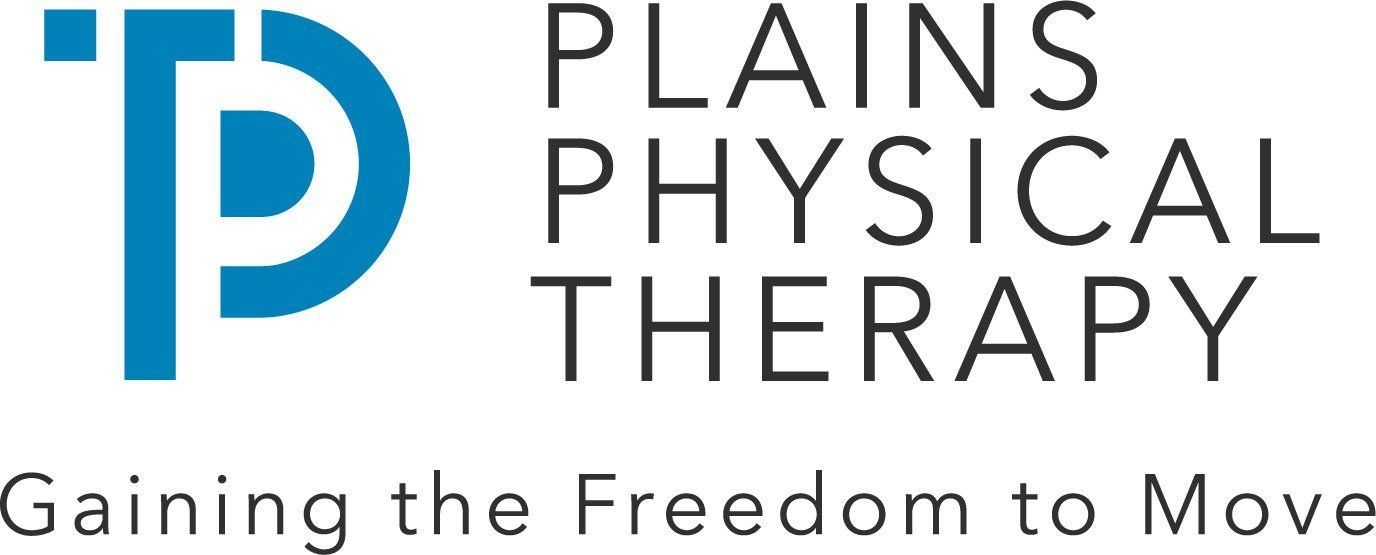November 15, 2025
How to Stay Active and Injury-Free All Season Long

Winter is right around the corner in Northwest Montana—and with it comes skiing, snowboarding, ice fishing, sledding, shoveling, and icy sidewalks that appear overnight.
For many of us, this shift happens fast. One day you’re raking leaves, the next day you’re digging your snow boots out of the closet. But your body doesn’t always transition quite as quickly.
Every year, thousands of people end up in urgent care or emergency rooms for winter-related injuries—many of them preventable. As temperatures drop, muscles tighten, joints stiffen, and our activity levels naturally taper off… until suddenly we’re asking our bodies to do something intense, like shoveling heavy snow or taking our first ski run of the season.
At Plains Physical Therapy, we want you to enjoy winter—not recover from it. Here’s how to prep your body now so you can stay safe, strong, and active all season long.
Why Cold Weather Increases Injury Risk
Cold temperatures change the way your body moves and responds:
- Muscles tighten in the cold, reducing flexibility
- Joints stiffen, especially if you have arthritis or older injuries
- Balance decreases on icy or uneven surfaces
- Sudden exertion (shoveling, skiing, lifting feed bags, etc.) stresses deconditioned muscles
This combination is why we see an uptick in back strains, shoulder injuries, knee sprains, and falls every winter.
Preparing for Winter Sports (Skiing, Snowboarding, Skating & Snowshoeing)
If you plan to hit the slopes or trails, now is the time to start conditioning. Ideally, begin training 4–6 weeks before your first day out.
Top Exercises to Get Winter-Ready:
1. Leg Strength (for control & shock absorption)
- Squats
- Lunges
- Step-ups
2. Core Strength (for balance & stability)
- Planks
- Rotational core exercises
3. Endurance (to reduce fatigue-related injuries)
- Walking, cycling, or swimming
4. Ankle Stability
- Single-leg balance
- Wobble board exercises
The better your balance and strength going in, the better you'll perform—and the less likely you'll get hurt.
Snow Shoveling: The #1 Cause of Winter Back Injuries
Snow shoveling might seem simple, but it sends thousands of people to medical providers every year. Heavy, wet snow + cold muscles = the perfect recipe for back strains, shoulder injuries, and even cardiac stress.
Before You Shovel:
- Warm up for 5–10 minutes (marching, arm circles, brisk walking)
- Layer your clothing
- Stay hydrated
Shoveling Smart:
- Push snow instead of lifting when possible
- Bend at your hips and knees, not your back
- Take smaller loads
- Avoid twisting—pivot your feet instead
- Take breaks often
Your back will thank you later.
A Quick 5-Minute Winter Warm-Up
Never start any winter activity “cold.” Try this first:
- 2 minutes light cardio: marching, jumping jacks, jogging in place
- 3 minutes dynamic movement:
- Leg swings
- Arm circles
- Torso twists
- Walking lunges
Save long, static stretches for after your workout or chores.
When to See a Physical Therapist
Reach out to Plains Physical Therapy if:
- You’re returning to winter sports after an injury
- You’ve been less active this fall
- You have stiffness or pain with cold weather
- You want a custom conditioning or injury-prevention plan
As a rural community clinic, we see these winter-related injuries every year—and we love helping people stay active safely.
We can help you build strength, improve balance, prevent injury, and keep you doing the things you love—even when the temperatures drop.
Stay Safe, Stay Active, Stay Warm
Winter in Montana is long—but it doesn’t have to be painful. With a little preparation, you can enjoy every snowy hike, powder day, or cozy shoveling session (okay, maybe not enjoy that one) without worrying about injury.
If you want help getting winter-ready, give Plains Physical Therapy a call. We’re here to keep you moving.
Sources Used
American Academy of Orthopaedic Surgeons (AAOS). "Prevent Snow Shoveling and Snowblowing Injuries." OrthoInfo. https://orthoinfo.aaos.org/en/staying-healthy/prevent-snow-shoveling-and-snowblowing-injuries/
BenchMark Physical Therapy. "Winter Sports Safety Tips." August 27, 2023. https://www.benchmarkpt.com/blog/winter-sports-safety-tips/
Mayo Clinic Health System. "Tips for safe snow shoveling." March 10, 2023. https://www.mayoclinichealthsystem.org/hometown-health/speaking-of-health/tips-for-safe-snow-shoveling
Sanford Health News. "Shoveling snow safely: Steps to prevent injury." December 17, 2024. https://news.sanfordhealth.org/healthy-living/preparation-key-preventing-injury-shoveling/
CORA Physical Therapy. "Tips for Preventing Snow Shoveling Injuries." June 27, 2022. https://coraphysicaltherapy.com/techniques-to-reduce-pain-before-during-and-long-after-shoveling-snow/
Breakthru Physical Therapy. "Navigating Winter Sports: Injury Prevention with Physical Therapy." January 24, 2024. https://www.breakthruptfitness.com/navigating-winter-sports-injury-prevention-with-physical-therapy-nj.html
Academy Orthopedics. "Common Winter Sports Injuries and How to Treat Them: Expert Advice and Tips." February 12, 2025. https://www.academyorthopedics.com/blog/common-winter-sports-injuries-and-how-to-treat-them-expert-advice-and-tips/






